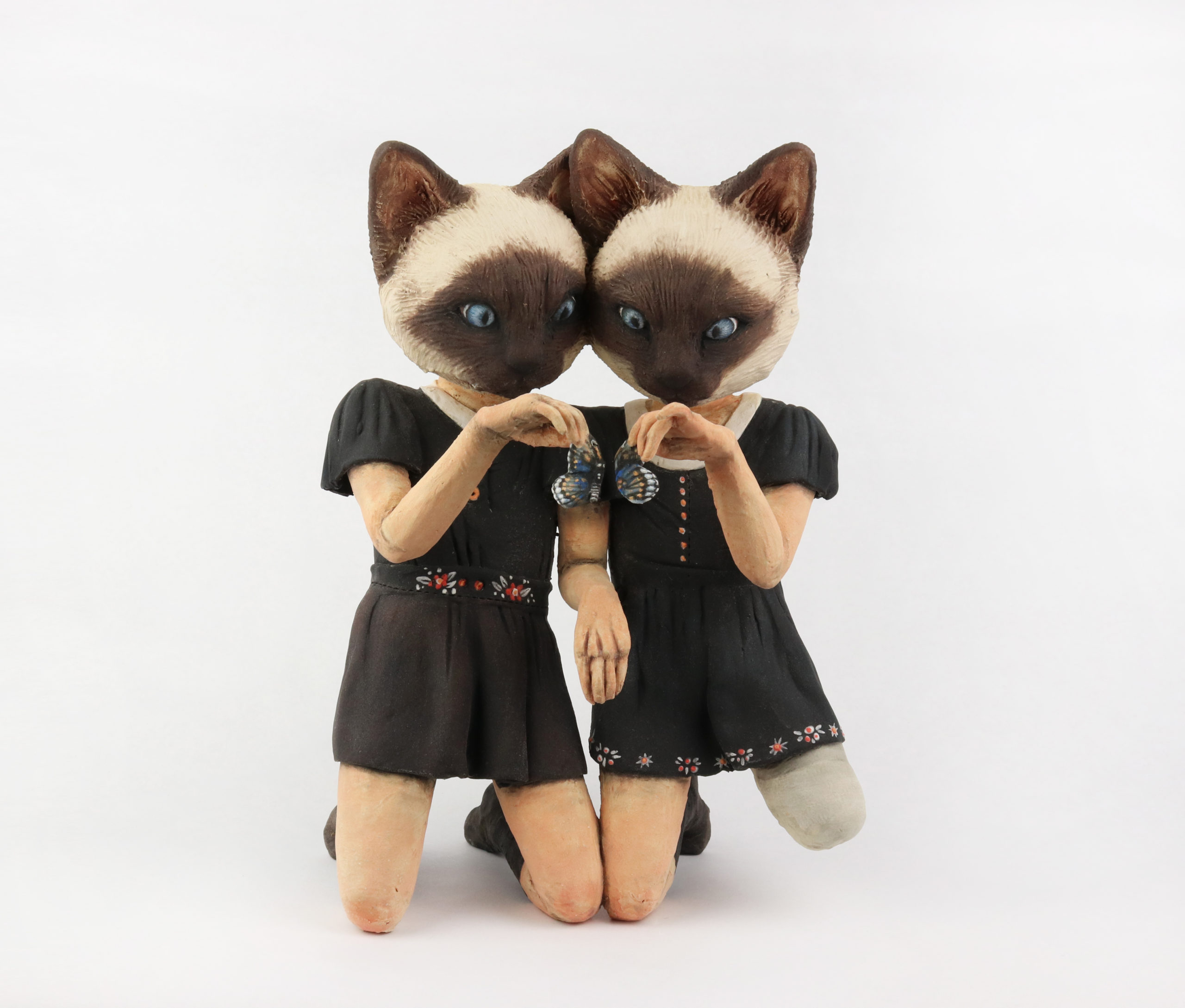
Wishbone


Asylums often allowed patients to keep caged canaries. What they did with them was their business. Birds were press-molded then stretched and purposely misshaped. Straight-jackets & skirts made from slip-dipped workman blue, disposable paper towels – it was the man who often made the admittance call to the asylum.
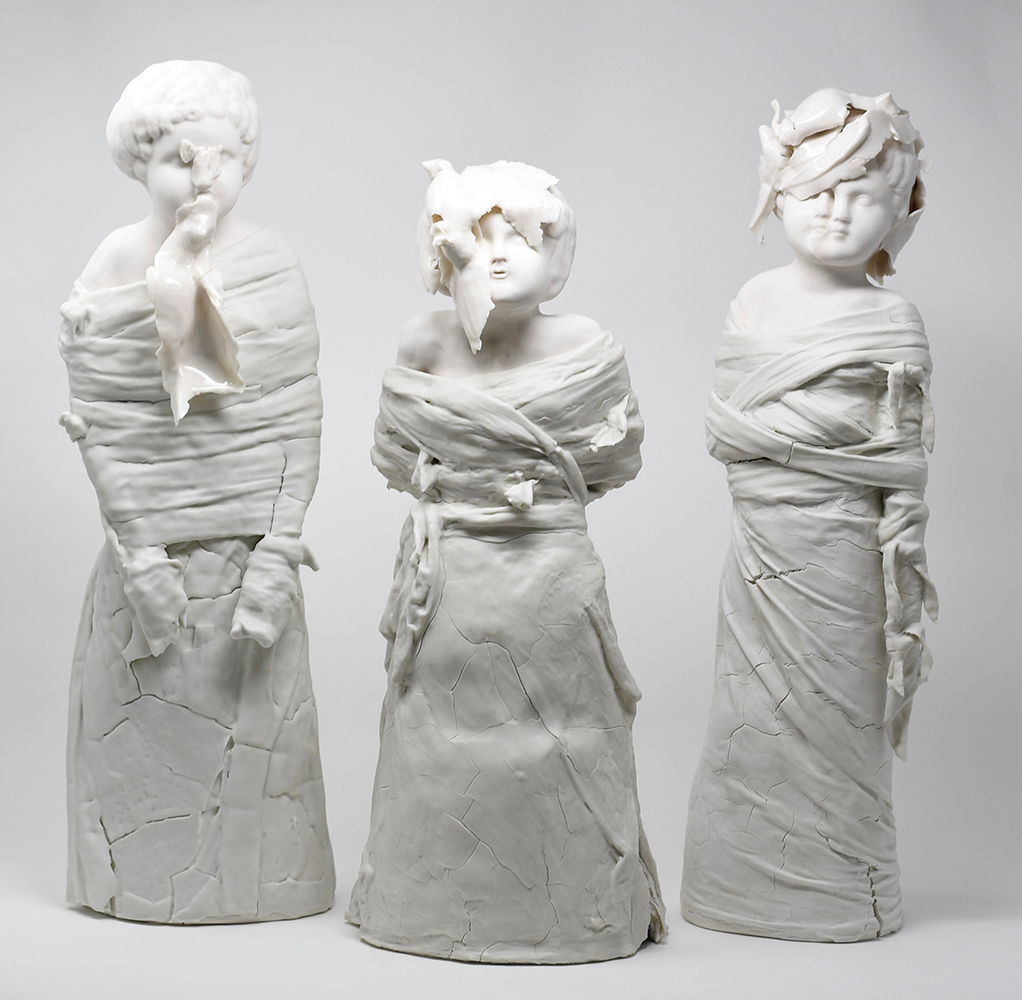
From a series of seven, these four women are wearing Scold’s Bridles from the Middle Ages. These iron masks with mouth bits were put on by men to control their gossipy wives. A pre-cursor to the #MeToo Movement. Frosting-like texture created with a palatte knife.
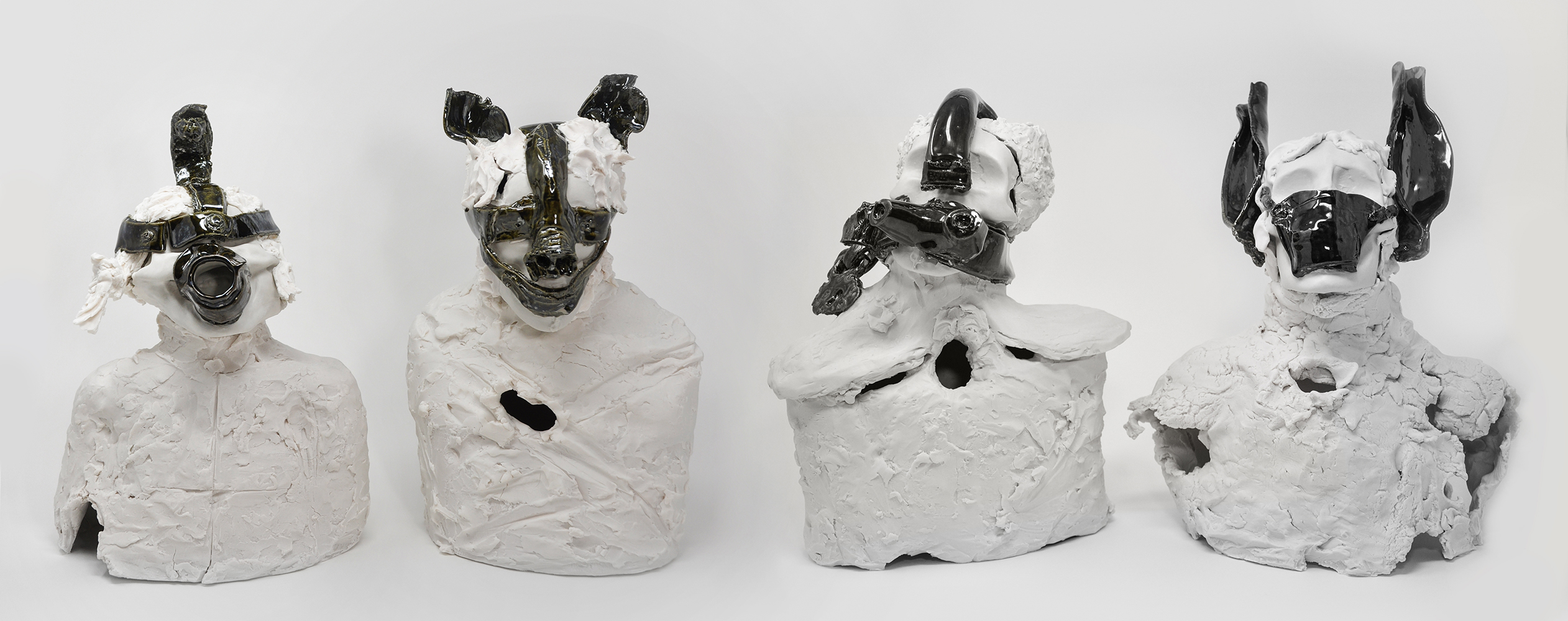
This series comments on the rise of American school shootings. Mothers dress their children in protective gear (costumes) before sending them off to school.
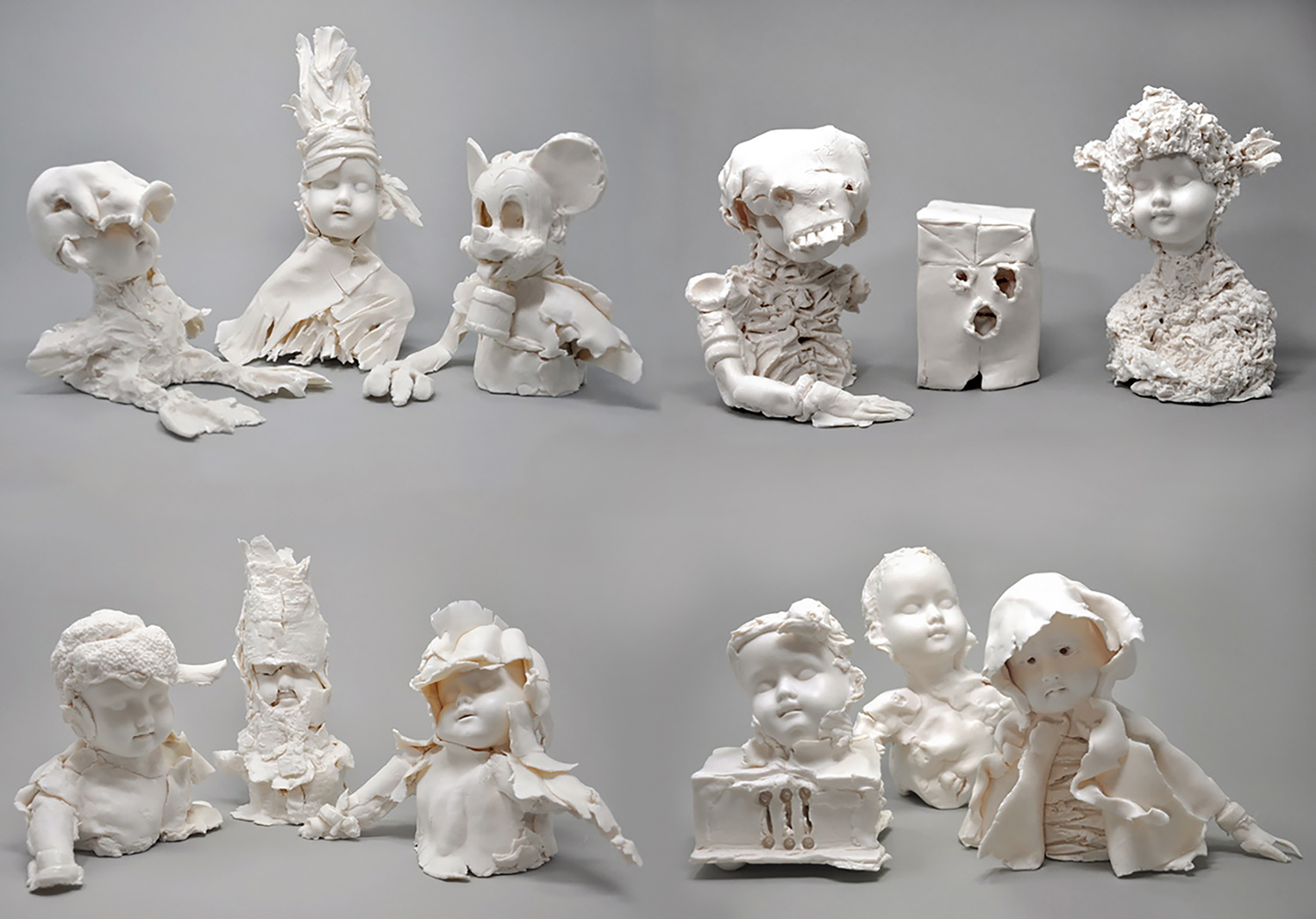
This installation was part of a solo show earlier this year at the John J. McDonough Museum of Contemporary Art in Youngstown, Ohio. Comprised of 100 stargazers, and several ghost ships – both served as stand-ins for today’s refugee crisis.
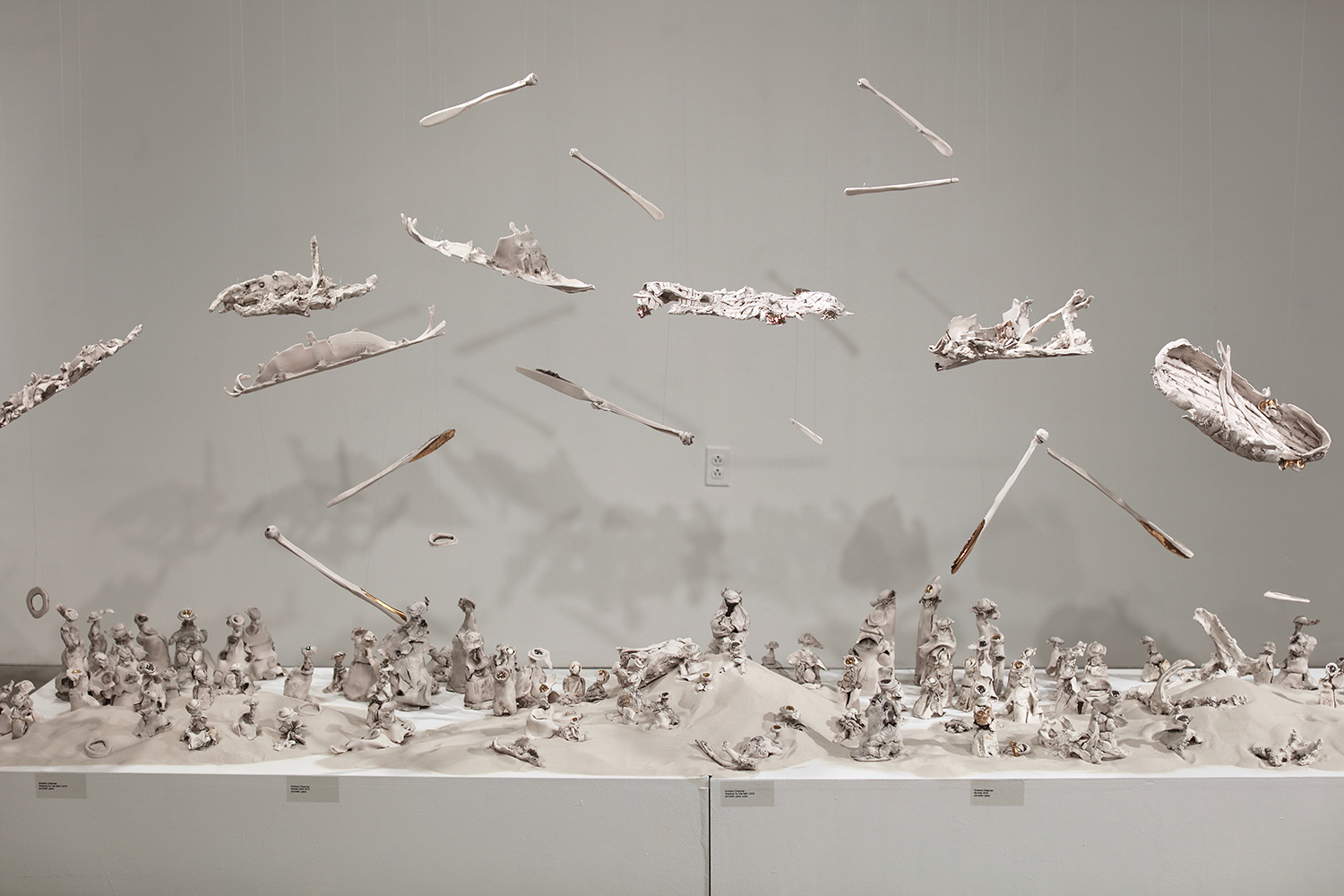
A trip to London (Agnes Gund Travel Award) last year inspired this partial collection of houses from Victorian times when poverty, disease and prostitution ran rampant.
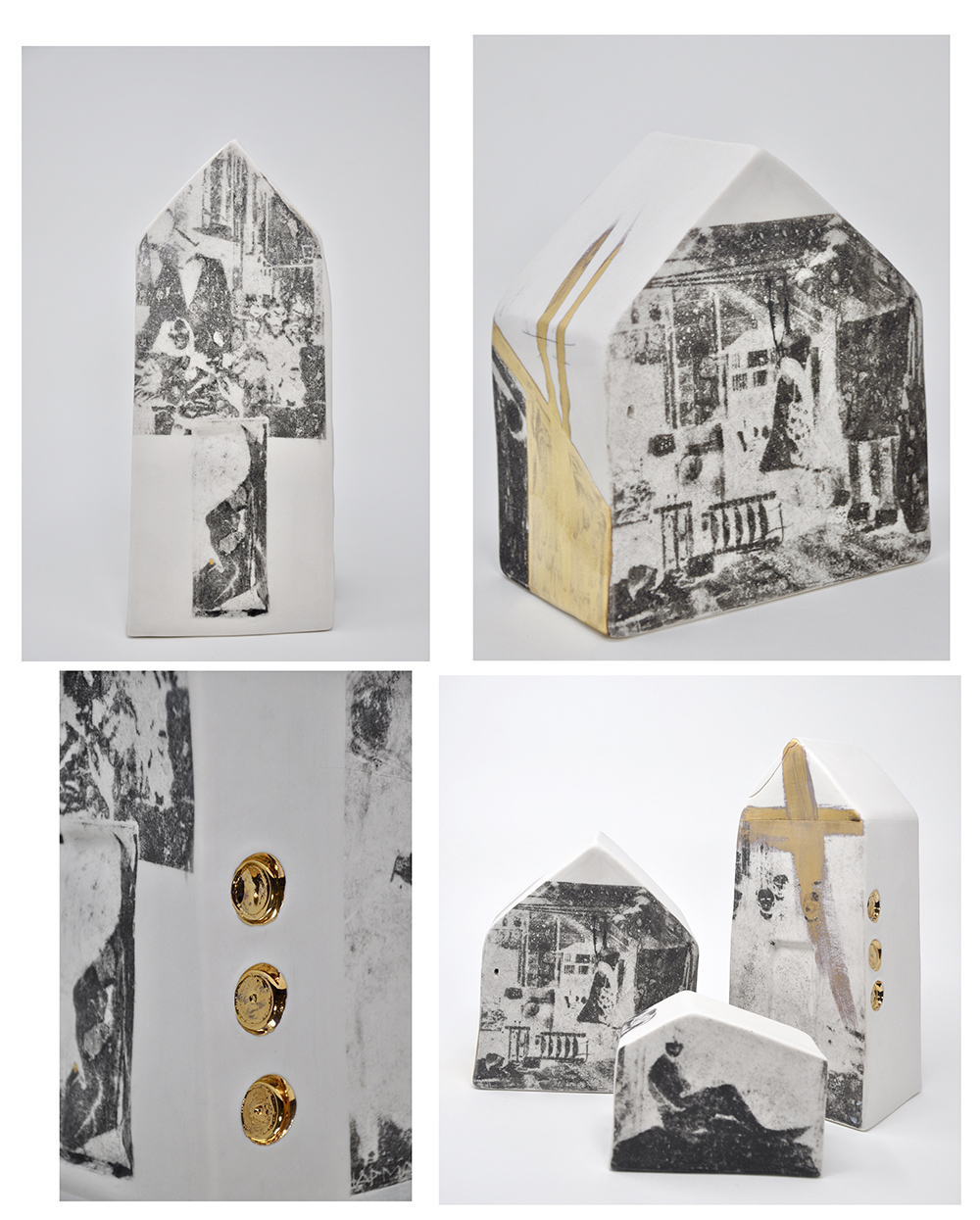
This reliquary pays homage children who have died from school shootings. It holds hundreds of hand pressed ears. Resting on the child’s collar are three ear bones – the smallest bones in the human body.
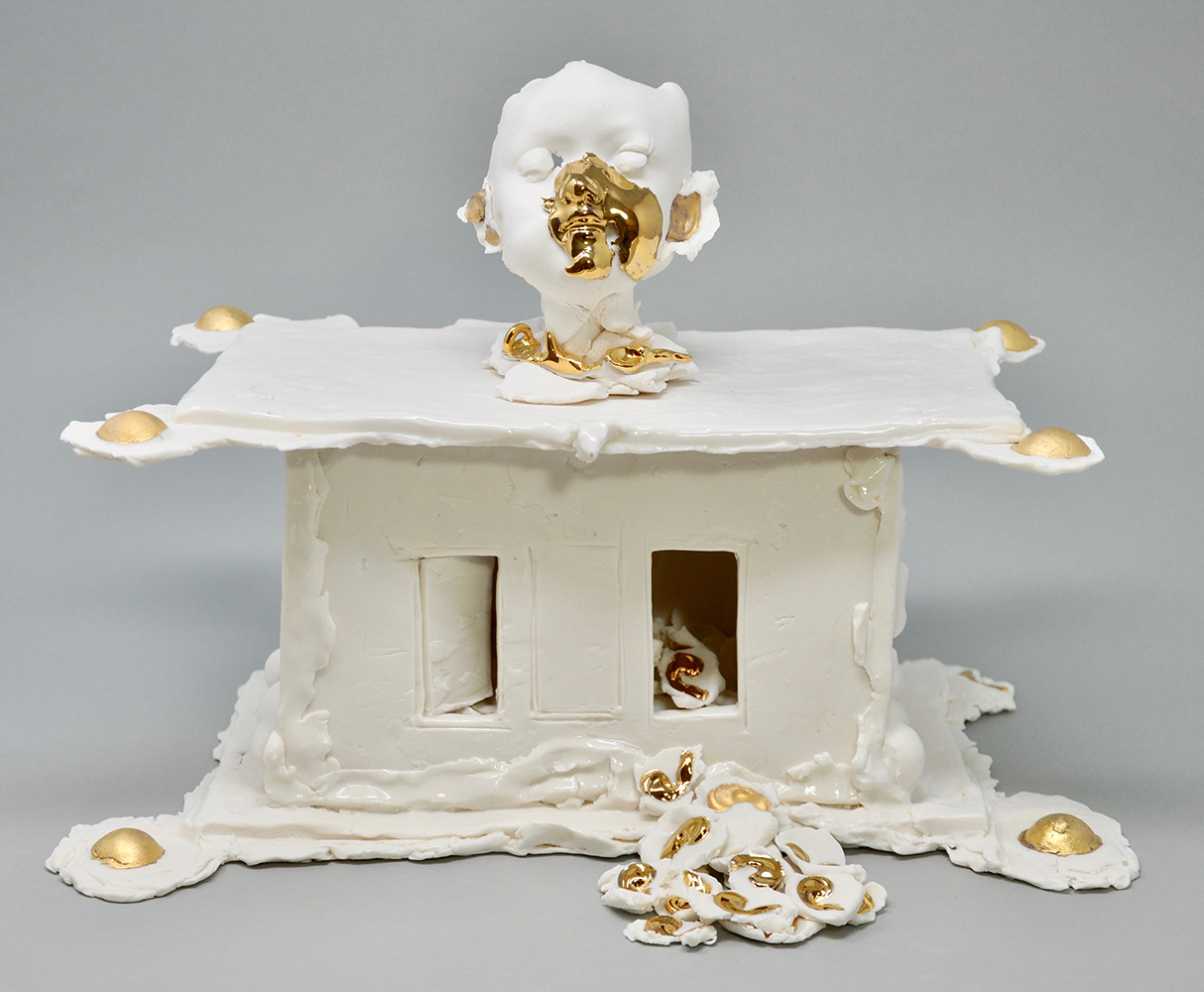
This sculpture combines use of a 4-part mold of the artist’s hand with a found 3-part bird mold. The pieces are altered and combined then wrapped with slip-dipped paper towels.
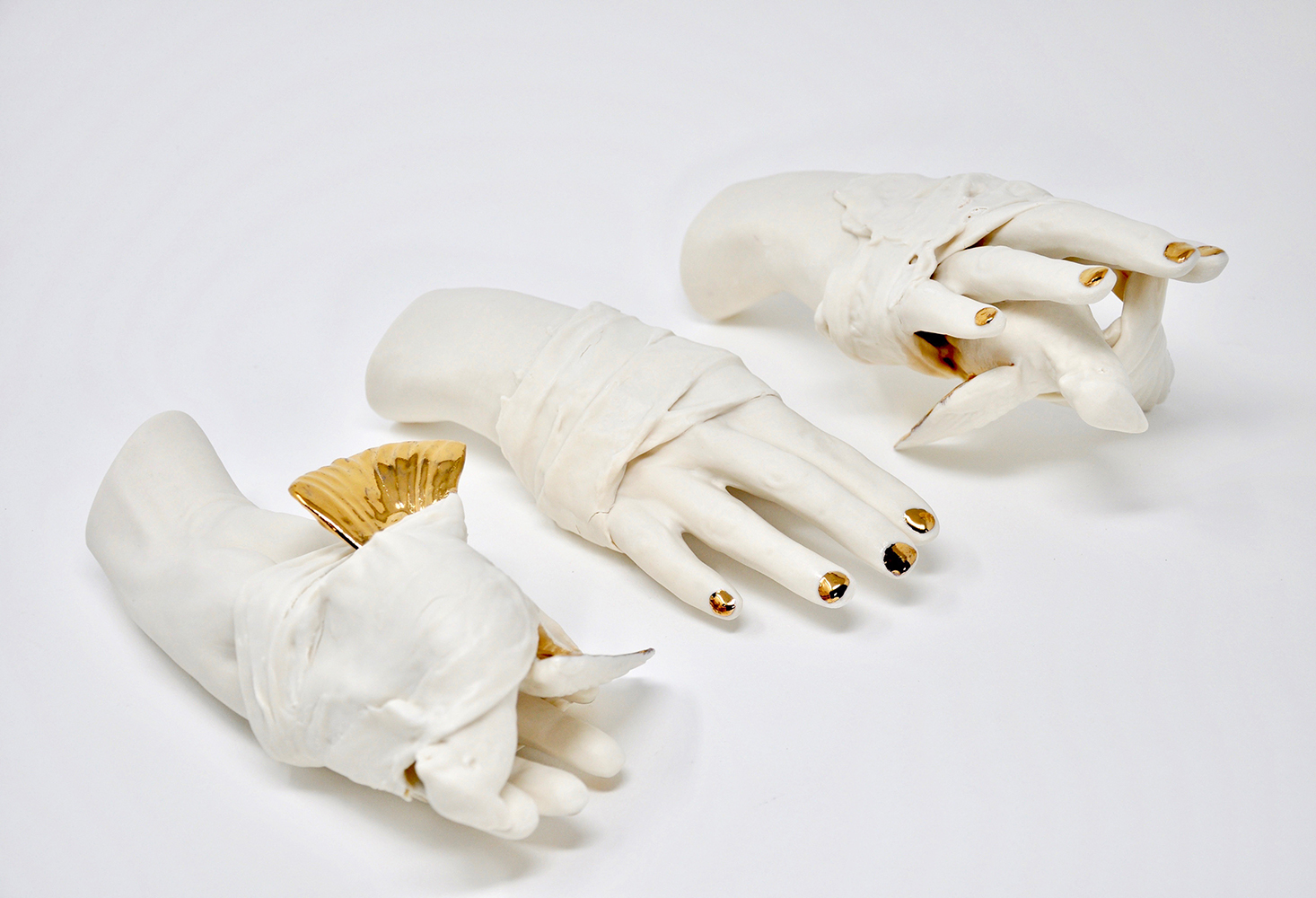
In the early 1900’s American psychiatrist Henry Andrews Cotton pulled over 10,000 rotted teeth from unwilling patients at the New Jersey State Hospital. He believed bad teeth was the leading cause of mental illness.
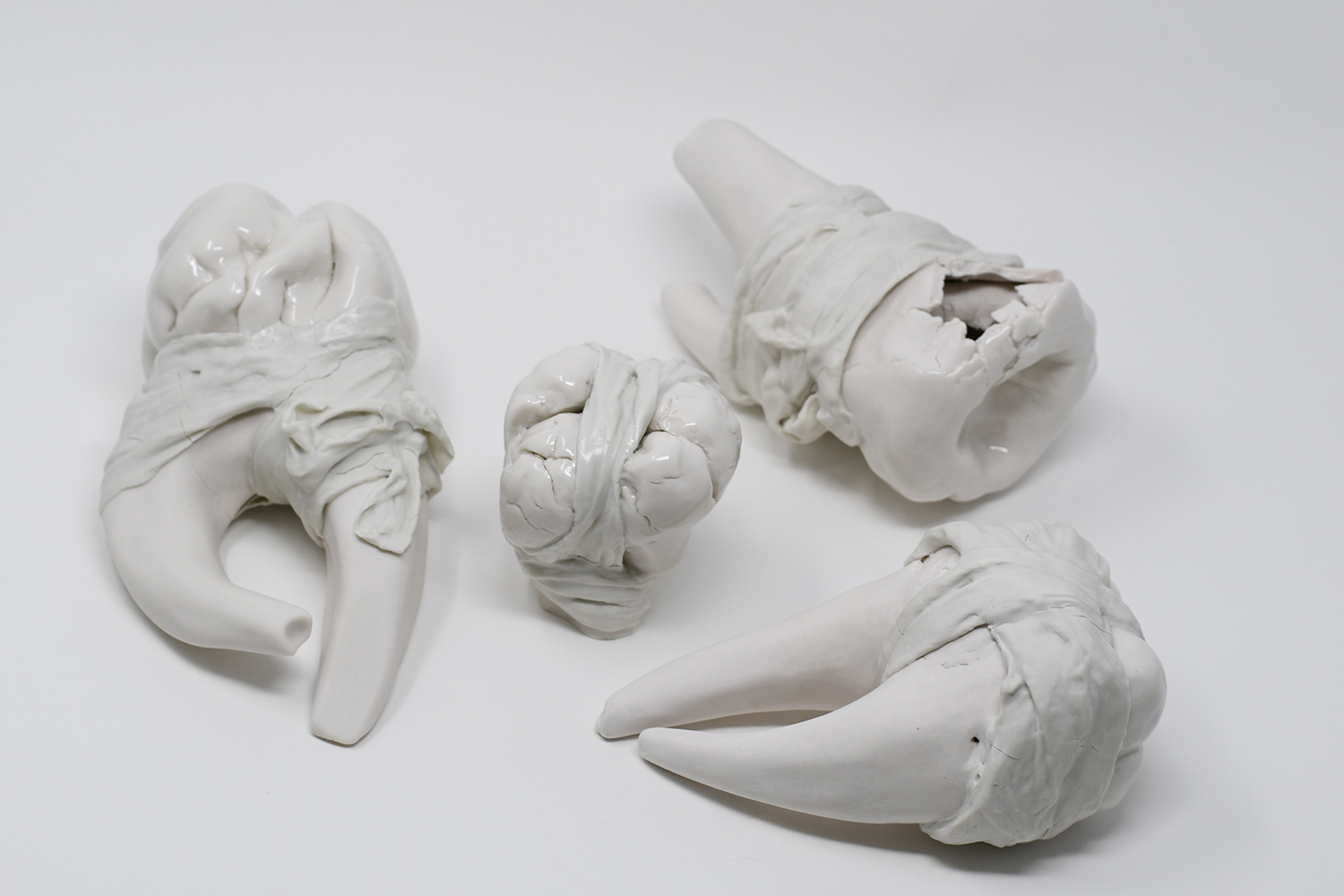
Part of the Asylum Series, these Masked Women seek cover to cope with their pent-up, locked-in existence where inhumane treatments and cruelty were commonplace.
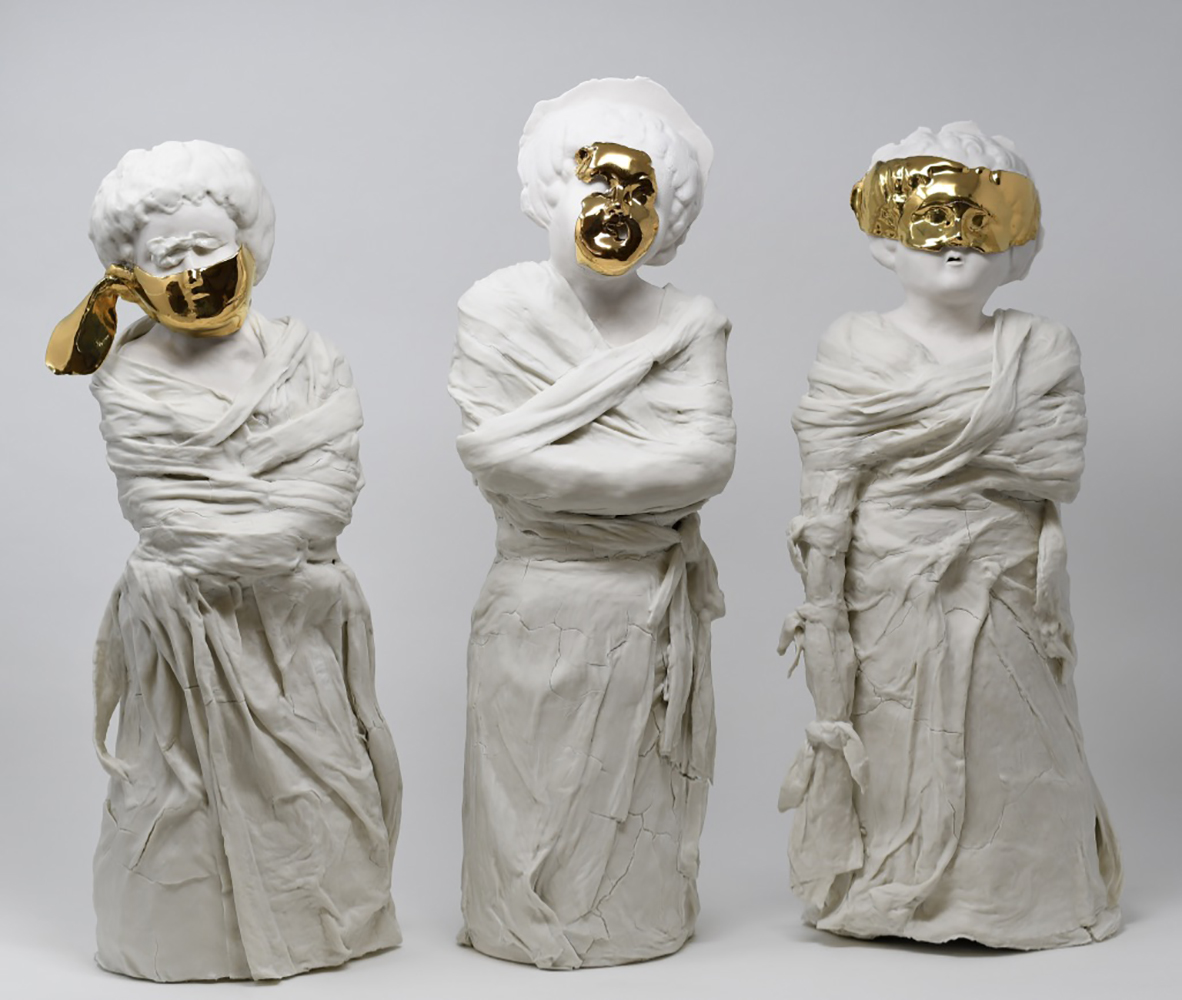
Subscribe to the Artaxis newsletter for all the latest news & updates.